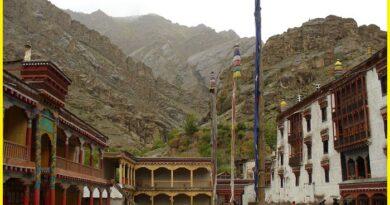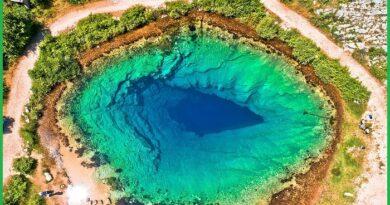How Kerala Weather Shapes Its Lush Landscapes
Kerala
Kerala, located in the southwestern part of India, is known for its diverse landscapes, rich culture, and significant historical importance. The Western Ghats mountain range runs along the eastern border, while the coastal plains are lush and green due to the abundant rainfall. Kerala has a long history of trade with ancient civilizations such as the Romans, Arabs, and Chinese, primarily in spices. The state was influenced by Portuguese, Dutch, and British colonial powers, which is evident in its architecture and cultural amalgamation.
Various natural attractions attract people from all around the world. The network of interconnected canals, rivers, and lakes forms the picturesque backwaters, with Alappuzha (Alleppey) being a popular destination. Munnar, Wayanad, and Thekkady are well-known for their scenic beauty and tea plantations. Kovalam, Varkala, and Marari are some of the famous beaches attracting tourists from around the world.
Kerala weather
Kerala experiences a tropical monsoon climate with distinct wet and dry seasons. The Kerala weather throughout the year can be summarized as follows-
Summer (March to May)
During the summer months, from March to May, Kerala experiences warm and humid conditions. Temperature in Daytime Highs: Typically range between 32°C to 36°C. Nighttime Lows: Generally range between 24°C to 28°C. Humidity-High Humidity: The coastal and tropical nature of Kerala results in consistently high humidity levels during the summer months, often exceeding 70%. Rainfall- Pre-Monsoon Showers: Towards the end of May, Kerala begins to experience pre-monsoon showers, which can bring some relief from the intense heat. These showers are often accompanied by thunderstorms.
Weather Conditions- Sunny and Hot: The weather is predominantly sunny with clear skies, especially in March and April. Increasing Cloud Cover: As the season progresses into May, cloud cover increases and the region starts to experience more frequent rain.
Also Read- Vagamon- Kerala’s Enchanting Hill Station
Geographical Influence- Western Ghats: The mountain range running along the eastern edge of Kerala can influence local weather patterns, often leading to heavier rainfall on the windward side. Coastal Regions: Areas along the coast may experience slightly moderated temperatures due to the proximity to the sea, but humidity remains high.
Effect on Daily Life- Agriculture: Farmers prepare for the upcoming monsoon season, which is critical for the rice and spice crops that Kerala is known for. Tourism: This is a shoulder season for tourism; the weather is warm but manageable, and attractions are less crowded compared to the peak monsoon season. Vishu Festival: Celebrated in April, Vishu marks the traditional new year and is an important cultural event in Kerala, often featuring fireworks, feasts, and traditional rituals.
Overall, the summer in Kerala is characterized by hot and humid conditions, with the anticipation of the monsoon rains building towards the end of May.
Monsoon (June to September)
The monsoon season in Kerala weather lasts from June to September and is a defining characteristic of the state’s climate.
Rainfall- Intensity and Frequency: Kerala receives heavy and frequent rainfall during the monsoon season, with the total rainfall often exceeding 2500 mm (100 inches) in some areas. Distribution: Rainfall is distributed unevenly across the state, with the Western Ghats receiving the highest amounts. Coastal areas and plains also experience significant rainfall.
Temperature-Daytime Temperatures: Typically range between 25°C to 30°C. Nighttime Temperatures: Generally range between 19°C to 25°. Cooling Effect: The continuous rain and cloud cover provide a cooling effect, bringing relief from the summer heat.

Humidity- High Humidity: The relative humidity during the monsoon season is very high, often between 80% and 90%. Muggy Conditions: The combination of high humidity and moderate temperatures can create muggy and uncomfortable conditions.
Weather Conditions- Cloud Cover: The skies are generally overcast with thick clouds covering the sun for most of the day. Thunderstorms: Frequent thunderstorms and lightning are common, especially during the onset and peak of the monsoon season. Wind: Winds are typically stronger during this period, contributing to the stormy weather.
The monsoon season is less popular with tourists due to the heavy rains, but it attracts those interested in experiencing the lush, green landscapes and the unique ambiance of Kerala during this time. Onam, Kerala’s most significant festival, occurs during the monsoon season. It is celebrated with various cultural events, including traditional games, dances, and boat races. The monsoon season is considered an ideal time for Ayurvedic treatments, as the cool and moist climate is believed to open up the pores of the skin, making treatments more effective.
Natural Beauty-Lush Greenery: The heavy rains transform Kerala into a lush, green paradise, with rejuvenated rivers, waterfalls, and backwaters. Scenic Locations: Hill stations like Munnar and Wayanad, and backwaters in Alappuzha (Alleppey) and Kumarakom become especially picturesque during this season.
The monsoon season in Kerala is a vital and transformative period, significantly influencing the state’s environment, economy, and culture.
Winter (December to February)
Winter in Kerala, spanning from December to February, is characterized by mild and pleasant weather.
Temperature- Daytime Temperatures: Typically range from 28°C to 32°C. Nighttime Temperatures: Generally range from 18°C to 24°C. Overall Comfort: The temperatures are moderate, making it one of the most comfortable times of the year in Kerala. Humidity- Lower Humidity: Compared to the monsoon and summer seasons, humidity levels are lower, usually ranging from 50% to 70%. Comfortable Conditions: The reduced humidity contributes to more comfortable and pleasant weather conditions.
Rainfall- Minimal Rainfall: This is the driest period of the year, with very little rainfall. Occasional light showers might occur, but they are infrequent. Clear Skies: Predominantly clear and sunny skies are common during the winter months.Weather Conditions- Sunny and Clear: The skies are mostly clear with abundant sunshine, making it ideal for outdoor activities. Cool Evenings: Nights and early mornings can be cool, especially in the hilly regions of Kerala.
Winter is the peak tourist season in Kerala. The pleasant weather attracts tourists to the beaches, backwaters, hill stations, and wildlife sanctuaries. Kovalam, Varkala, and Marari are popular beach destinations during the winter. Munnar, Wayanad, and Thekkady are favored for their cool climate and scenic beauty. Alappuzha (Alleppey) and Kumarakom are prime locations for houseboat cruises and backwater tours.
Christmas and New Year: These holidays are widely celebrated with festive decorations, events, and cultural programs. Various temple festivals occur during this time, showcasing traditional music, dance, and rituals. Though usually held in April, preparations and associated events start early in some areas, adding to the cultural vibrancy. The state remains green and vibrant due to the residual moisture from the monsoon, making it picturesque and attractive for nature lovers and photographers.
Overall, winter in Kerala weather offers a perfect blend of comfortable weather, cultural experiences, and natural beauty, making it an ideal time to visit the state.
How to Reach Kerala
Reaching Kerala, located in the southwestern part of India, is relatively straightforward due to its well-developed transport network.
By Air
Cochin International Airport- Located in Kochi, it is the busiest airport in Kerala and well-connected to major cities in India and abroad, including the Middle East, Southeast Asia, Europe, and the United States. Trivandrum International Airport: Situated in Thiruvananthapuram, the capital city, it offers international flights to the Middle East, Southeast Asia, and Europe, as well as domestic flights. Calicut International Airport: Located in Kozhikode, it serves northern Kerala and has flights to the Middle East and other domestic destinations.
Domestic Airports– Kannur Airport (CNN): Serves the northern part of Kerala with connections to major Indian cities and some international destinations.
By Train
Kerala is well-connected by the extensive railway network of Indian Railways. Major railway stations include Thiruvananthapuram Central: The main railway station in the capital city. Ernakulam Junction: The primary station in Kochi. Kozhikode: The main station in Calicut. Thrissur: A major station in central Kerala.



